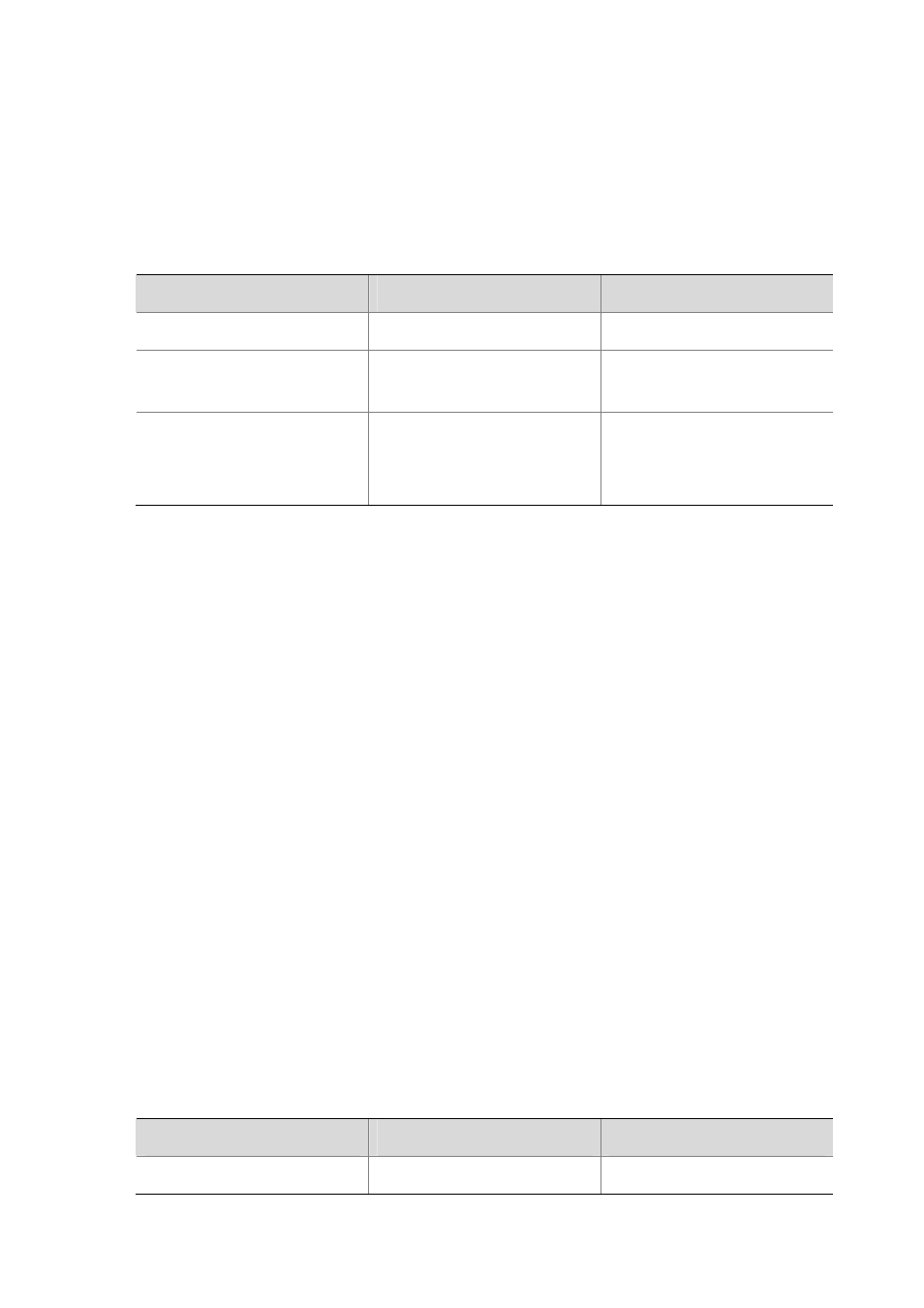Configuring the multicast forwarding table size – H3C Technologies H3C S7500E Series Switches User Manual
Page 95

4-11
You can configure a forwarding boundary specific to a particular multicast group on all
interfaces that support multicast forwarding. A multicast forwarding boundary sets the boundary
condition for the multicast groups in the specified range. If the destination address of a
multicast packet matches the set boundary condition, the packet will not be forwarded. Once a
multicast boundary is configured on an interface, this interface can no longer forward multicast
packets (including packets sent from the local device) or receive multicast packets.
Follow these steps to configure a multicast forwarding range:
To do...
Use the command...
Remarks
Enter system view
system-view
—
Enter interface view
interface interface-type
interface-number
—
Configure a multicast forwarding
boundary
multicast boundary
group-address { mask |
mask-length }
Required
No forwarding boundary by
default
Configuring the Multicast Forwarding Table Size
The router maintains the corresponding forwarding entry for each multicast packet it receives.
Excessive multicast routing entries, however, can exhaust the router’s memory and thus result
in lower router performance. You can set a limit on the number of entries in the multicast
forwarding table based on the actual networking situation and the performance requirements. If
the configured maximum number of multicast forwarding table entries is smaller than the
current value, the forwarding entries in excess will not be immediately deleted; instead they will
be deleted by the multicast routing protocol running on the router. The router will no longer add
new multicast forwarding entries until the number of existing multicast forwarding entries comes
down below the configured value.
When forwarding multicast traffic, the router replicates a copy of the multicast traffic for each
downstream node and forwards the traffic, and thus each of these downstream nodes forms a
branch of the multicast distribution tree. You can configure the maximum number of
downstream nodes (namely, the maximum number of outgoing interfaces) for a single entry in
the multicast forwarding table to lessen burden on the router for replicating multicast traffic. If
the configured maximum number of downstream nodes for a single multicast forwarding entry is
smaller than the current number, the downstream nodes in excess will not be deleted
immediately; instead they must be deleted by the multicast routing protocol. The router will no
longer add new multicast forwarding entries for newly added downstream nodes until the
number of existing downstream nodes comes down below the configured value.
Configuring the multicast forwarding table size in the public instance
Follow these steps to configure the multicast forwarding table size in the public instance:
To do...
Use the command...
Remarks
Enter system view
system-view
—
